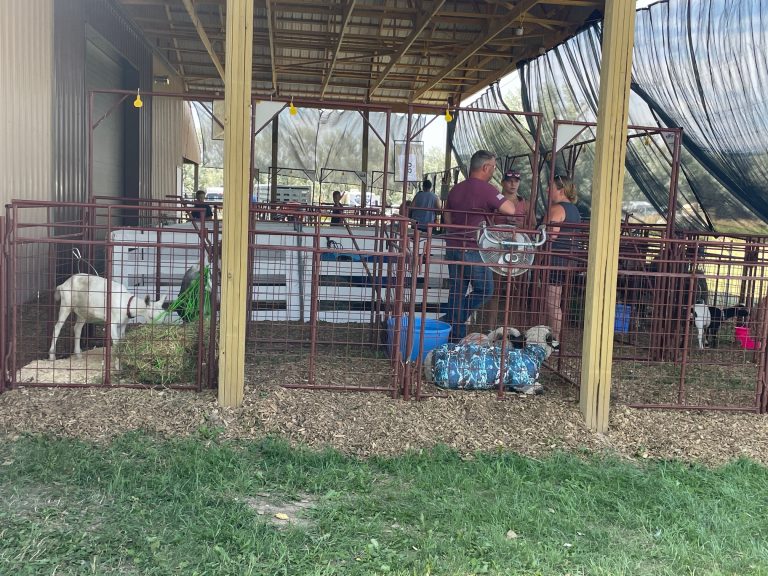WASHINGTON, DC – USDA’s latest Cattle on Feed report, released May 21, shows the number of animals on feed as of May 1 is 4.7% above year-ago levels. It is important to remember that due to COVID-19 disruptions last year, typical year-over-year comparisons need to be contextualized.
 May Cattle on Feed Report
May Cattle on Feed Report
The report showed a total inventory of 11.725 million head in the United States on May 1, up from the same time in 2020 but down from last month, and down 0.7% from 2019. This 4.7% increase is a bit above analysts’ expectations of feedlot inventories increasing 3.9% from last year. The report marks the second-highest May inventory since the series began in 1996.
As usual, Texas, Kansas and Nebraska led the way in total fed cattle numbers, accounting for nearly 8 million head, or approximately 68% of the total on-feed inventory in the country. All three posted year-over-year increases, ranging from 5% to 7% higher than in 2020.
While total inventories are an important component of the report, other key factors include placements (new animals being placed on feed) and marketings (animals being taken off feed and sold for slaughter). Coming in at 27.2% above 2020, placements in April came in above the average analyst expectation of a 22.5% increase. The very wide range of forecasts for placements – 22% — highlights the uncertainty in forecasting this specific variable while trying to account for the disruptions at this time last year.
Drought conditions are leading to record levels of poor pasture conditions, potentially driving more feeder cattle into feedlots. However, higher feeding costs due to corn and soybean prices will make things difficult for feeders for the foreseeable future.
Another factor to consider in higher placement numbers were higher levels of imported feeder cattle from Mexico for the time period. In April, placements clocked in at 1.821 million head, 389,000 head above a year ago but about 1% below 2019.
Marketings came in at 1.938 million head, or 32.8% above last year. This is right in line with the average analyst expectation of a 33% increase over year-ago levels. Marketings also had a decent range of expectations in this report (although much smaller than the range in placement estimates), with analysts’ predictions ranging from an increase of 29% to 36.4%.
We are still seeing higher levels of heavier cattle on feed relative to normal history, although it is expected to be down from last year when cattle were backing up in the system due to constraints at the packing level.
Summary
This May Cattle on Feed report is considered relatively neutral to bearish due to higher-than-expected placements. While the level of the increase in placements would normally be extremely bearish news, year-over-year comparisons should largely be avoided due to last year’s disruptions. The overall supply of cattle on feed is up nearly 5% over last year but almost 1% below 2019, and the number of animals marketed throughout April is well above a year ago, but right in line with expectations. Many producers’ attention will now be on the weather as dry conditions heading into the grazing season are leading to record levels of poor pasture conditions. Add to that feeding costs driven higher by corn, soybean and hay prices making it difficult for some producers to keep their animals out of the feedlot until they are heavier, and it’s likely to be a difficult summer ahead for some producers.
MINNESOTA
Cattle and calves on feed for the slaughter market in Minnesota for feedlots with a capacity of 1,000 or more head totaled 110,000 head on May 1, 2021, according to the latest USDA, National Agricultural Statistics Service – Cattle on Feed report. This is down 5,000 head from last month and down 20,000 head from last year.
Placements during April totaled 13,000 head, down 3,000 head from March, but unchanged from last year.
Marketings for April were 17,000 head, up 2,000 head from last month and up 5,000 head from last year.
Other disappearance totaled 1,000 head.
IOWA
Cattle and calves on feed for the slaughter market in Iowa feedlots with a capacity of 1,000 or more head totaled 630,000 head on May 1, 2021, according to the latest USDA, National Agricultural Statistics Service – Cattle on Feed report. This was unchanged from April, but up 2% from May 1, 2020. Iowa feedlots with a capacity of less than 1,000 head had 525,000 head on feed, down 3% from last month and down 10% from last year. Cattle and calves on feed for the slaughter market in all Iowa feedlots totaled 1,155,000 head, down 1% from last month and down 4% from last year.
Placements of cattle and calves in Iowa feedlots with a capacity of 1,000 or more head during April totaled 101,000 head, down 10% from March but up 63% from last year. Feedlots with a capacity of less than 1,000 head placed 56,000 head, down 18% from March but up 107% from last year.
Placements for all feedlots in Iowa totaled 157,000 head, down 13% from March but up 76% from last year.
Marketings of fed cattle from Iowa feedlots with a capacity of 1,000 or more head during April totaled 98,000 head, down 10% from March but up 44% from last year. Feedlots with a capacity of less than 1,000 head marketed 68,000 head, up 5% from March and up 70% from last year. Marketings for all feedlots in Iowa were 166,000 head, down 5% from March but up 54% from last year. Other disappearance from all feedlots in Iowa totaled 6,000 head.
COLORADO
The number of cattle and calves on feed for the slaughter market in Colorado feedlots with a capacity of 1,000 head or larger was estimated at 1,040,000 head as of May 1, 2021. The latest inventory was 2 percent below last month’s inventory but 9 percent above the May 1, 2020 inventory.
Cattle feeders with 1,000 head or larger capacity marketed an estimated 175,000 head of fed cattle during April 2021. This was 19 percent below the previous month’s marketings but 46 percent above the marketings one year earlier.
An estimated 160,000 cattle and calves were placed on feed during April 2021, 11 percent below the previous month’s placements but 39 percent above the April 2020 placements. Of the number placed in April, 19 percent weighed less than 600 pounds, 16 percent weighed from 600 to 699 pounds, 22 percent weighed from 700 to 799 pounds, 25 percent weighed 800 to 899 pounds, and 19 percent weighed 900 pounds or greater.
Other disappearance for April, at 5,000 head, was the same as last month and the same as last year.
NEBRASKA
Nebraska feedlots, with capacities of 1,000 or more head, contained 2.53 million cattle on feed on May 1, according to the USDA’s National Agricultural Statistics Service. This inventory was up 7% from last year.
Placements during April totaled 425,000 head, up 37% from 2020.
Fed cattle marketings for the month of April totaled 465,000 head, up 48% from last year.
Other disappearance during April totaled 10,000 head, down 5,000 head from last year.
KANSAS
Kansas feedlots, with capacities of 1,000 or more head, contained 2.47 million cattle on feed on May 1, according to the USDA’s National Agricultural Statistics Service. This inventory was up 6% from last year.
Placements during April totaled 435,000 head, up 23% from 2020.
Fed cattle marketings for the month of April totaled 435,000 head, up 40% from last year.
Other disappearance during April totaled 10,000 head, down 5,000 head from last year.
OKLAHOMA/TEXAS
This report contains results from the May 2021 Cattle on Feed Survey collected during the first two weeks of May. Data provided by Oklahoma and Texas producers are the foundation of the estimates made for the Southern Plains region.
Cattle and calves on feed for slaughter market in Texas feedlots with capacity of 1,000 head or more totaled 2.82 million head on May 1, 2021, up 5 percent from a year ago. Producers placed 410 thousand head in commercial feedlots during April, up 24 percent from a year ago. Texas commercial feeders marketed 450 thousand head during April, up 15 percent from 2020.
TEXAS NORTHERN HIGH PLAINS
On May 1, there were 2.50 million head of cattle and calves on feed in the Northern High Plains, 89 percent of the state’s total. The number on feed across the area was up 5 percent from last year but down 2 percent from the April 1 total. April placements in the Northern High Plains totaled 369 thousand head, down 12 percent from the March total. Marketings were down 2 percent from last month at 404 thousand head.












